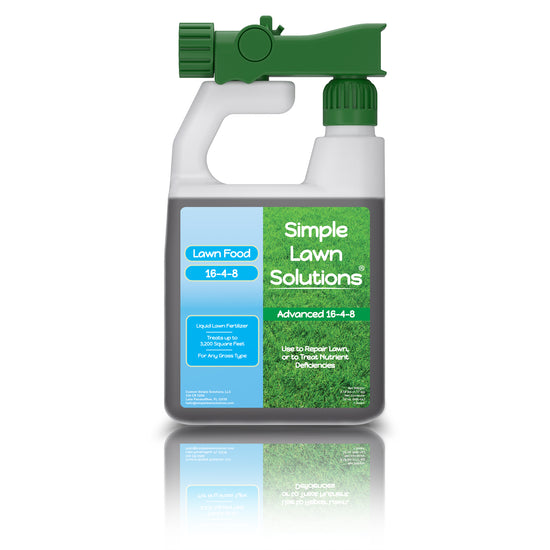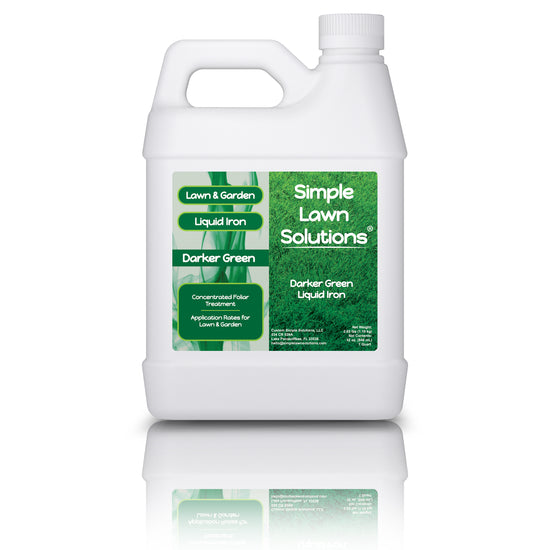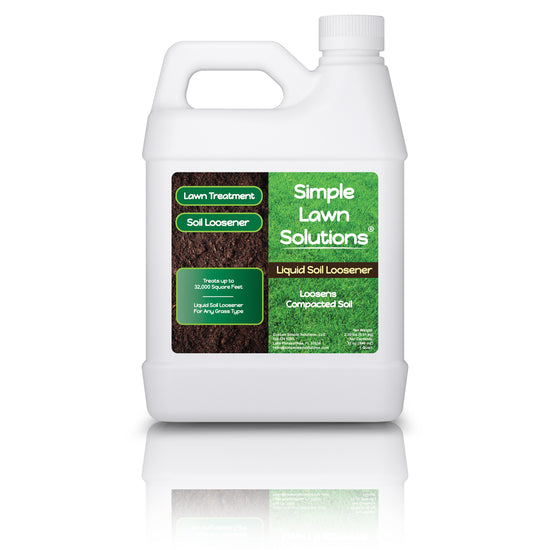Your yard is a massive part of the overall appearance of the exterior of your home. A tidy, pristine yard highlights all the best features of a home. More than that, your family makes memories in the yard! However, a well-manicured lawn is more than a treat for you and your neighbors to look at. In fact, a well-maintained lawn can increase the value of a home by fifteen to twenty percent!

Lawns are living plants, and like any other living thing, unfortunately, lawns are prone to all sorts of issues that can hinder their overall appearance. Don’t despair if you are currently trying to fix your lawn. You can correct most grievances with some simple lawn care and proactive grass care measures.
Bare Spots
First on the list of common lawn care issues are bare spots. Even the most experienced lawn care expert might fall victim to the occasional patch of grass that dies or just won’t grow.
What Causes it?

Many things can cause bare spots, including:
- Heavy foot traffic that kills the grass and compacts the soil
- Drought
- Burns
- Fungus or insect infestation
How to Fix it
To correct bare spots, you must first identify the cause. If foot traffic has killed your grass, consider installing a path or stepping stones to avoid facing the same grass care issue time and time again. If you can redirect people and animals, temporarily block off the area to regrow your grass.

If you have a fungus or insect problem, treat the issue with your chosen lawn care method. It can be difficult to detect the kinds of insects that are causing damage so you can use a solution of two tablespoons of lemon-scented dishwashing detergent mixed with two gallons of water and pour it on a patch of your grass. Using this drench test will encourage insects to escape the soil, letting you know what kind of insect you’re dealing with. Once you know the insect, you can treat the problem.
Only after you’ve identified the cause will you begin to grow new grass in the bare spots. Follow these grass care tips to get your lawn back on track.
- Dig up three to six inches of the bare spot. If you had a chemical burn or treated the grass with chemicals, dig six inches deep, breaking up clumps as you go.
- Add fresh topsoil and use a hand rake to mix, then level the surface. You can use a starter fertilizer at this point if you desire.
- Following package directions, apply lawn seed.
- Water the spot thoroughly and keep moist for the first several days. Avoid mowing the new growth until it is about three inches long. Once it reaches three inches long, remove no more than ⅓ of the length when you mow. Following these basic lawn care tips allows the new grass roots to grow deeply, increasing their chances of survival.
- Six to eight weeks after seeding feed grass with a liquid fertilizer high in phosphorus and potassium to encourage root development.
Lawn Diseases
Lawn diseases can damage your grass and can be caused by poor cultural practices such as watering too much or letting too much organic matter pile up.
How to Fix it
Finding the cause of the fungus is the first step in addressing the damage. However, instilling good cultural practices after you see fungus may not be enough and you may have to apply a fungicide. Before applying a fungicide, consult with a professional or do your research to determine the type of fungus. Applying the wrong products can be devastating to your lawn.
Weeds
Weeds are probably the most common grass care concern. Not only are weeds unsightly, but they also steal vital nutrients that should be going to your grass. First, determine what variety of weed you are dealing with (broadleaf or grassy?), then move on to treatment.
What Causes it?
Annual weeds (typically broadleaf weeds in lawns) complete their life cycle within one calendar year. After setting seed and dying they return the following growing season from seed created the previous year; if you don’t intervene. Perennial weeds (typically grassy weeds in lawns) don't die and regenerate from seed. They return year after year from the same living plant that may go dormant until conditions are right. Conditions that allow weeds to grow include compacted soil, shortly mowed grass, and poor grass care and watering techniques.
How to Fix it
Even the most seasoned lawn care expert will deal with weeds every year, as they are extremely persistent. Manually removing a few weeds by the roots might be all the lawn care you need. But if the problem is more pervasive, treat weeds depending on the growing stage. There are pre-emergent treatments, made to treat weeds before they begin growing in the springtime, and post-emergent treatments designed to kill weeds that have already begun to invade. When you purchase the weed treatment, carefully read and apply to treat the grass. Then, maintain these regular lawn care steps to proactively prevent weeds from becoming a big grass care problem again.
- In the spring, aerate, apply fertilizer, and seed your lawn if necessary. Apply pre-emergent weed care.
- Deeply and infrequently, water your lawn approximately one to two inches of water per week through the growing season.
- Mow regularly during the growing season, never removing more than one-third the length. Frequent mowing encourages lateral growth, necessary for a dense lawn canopy that blocks light from weeds. Also, weeds aren't too fond of the frequent trimmings, putting them at a disadvantage. Keep your grass three to four inches long.
- Before winter, apply fertilizer to your yard, aerate if necessary, and give it one last short mow.
By following these lawn care tips and regularly using fertilizer, you keep the soil and grass in a condition that discourages the growth of pesky weeds. These steps also help maintain the appearance of a well-manicured lawn.
Pet Damage
 We love our pets and make them part of the family, but that doesn’t mean our lawns love our pets! Pets can contribute to general wear and tear foot traffic, and their waste can burn and kill the grass. Luckily, we can fix these lawn care issues with some preventative measures, and treat pet problems that tend to pop up.
We love our pets and make them part of the family, but that doesn’t mean our lawns love our pets! Pets can contribute to general wear and tear foot traffic, and their waste can burn and kill the grass. Luckily, we can fix these lawn care issues with some preventative measures, and treat pet problems that tend to pop up.
What Causes it?
Dog urine naturally contains high amounts of nitrogen, lactic acid, and related salts. You might feel confused because nitrogen is one of the main nutrients in fertilizers that contributes to lush green growth. “Too much of a good thing” applies to lawn care, and dog pee adds too much nitrogen to grass when concentrated in one area. This concentration is essentially like overusing fertilizer and killing your grass.
How to Fix it
Minor burns from dog urine will repair themselves over time, but if your furry BFF has completely killed patches in your yard, you have to step in. Fortunately, it’s easy to correct bare patches with some simple grass care.

- First, flush the dead spot repeatedly with water to rinse out as much of the urine salts as possible. Then remove the dead grass with a rake.
- Follow the lawn care steps outlined above to repair the bare spot, including adding topsoil, fertilizer, then grass seed.
- As the grass seed germinates, it’s vital that you keep dogs away from the bare spot. Block the area off, if needed, until you’ve mowed the new grass at least three times.
Take proactive lawn care steps to protect your grass from your furry friend’s waste in the future. Stressed out, unhealthy grass is more prone to doggy issues.
Rusty Colored Spots and Fairy Rings
As a homeowner, you experience some mysterious things, and your lawn is no exception. If rusty-colored powdery residue that comes off on your hands and feet appears, or if a mysterious ring appears in your grass, it’s not aliens. Instead, you likely have a fungus problem.
What Causes it?
Fungal spores, known as rust, turn your grass an orange color and kill the grass. Sometimes mushrooms will accompany a fungus issue and grow in rings as well. Poor grass care and lawn conditions like under-watering, overwatering, and a scarcity of nitrogen can contribute to fungal disease in grass.
How to Fix it?
Corrective lawn care for fungus involves first applying a fungicide to your affected areas. As always, follow directions carefully. Then improve your grass care habits and be proactive about your lawn care. Rust, specifically, loves nitrogen-deficient turf so feed grass with fertilizer regularly. In addition, aerate your lawn once or twice a year, water correctly, and mow your lawn regularly.
Moss

Moss likes similar conditions to fungus, but when grown purposefully, moss can be a beautiful addition to a garden. However, when moss finds your grass care conditions favorable, it’s a problem, because moss competes with your grass for nutrition, and can choke out the grass altogether.
What Causes it?
Moss loves damp, low light, and poor soil conditions. Once it shows up, it can spread until you put a stop to it with simple lawn care techniques.
How to Fix it
For easy removal, first, kill the moss and let it dry out. You can do this by mixing dawn dish soap with water and pouring it on the moss. Within twenty-four hours, it should be brown and dry. Then use a rake to remove the dead moss. Follow the steps above to patch the now bare spot. Then improve your grass care so that the moss doesn’t return. Use fertilizer and regularly aerate to improve your soil’s health, and keep your lawn appropriately watered. Water in the morning, so the soil has time to dry out through the day and adjust how much you’re watering with the rain patterns. Choose a more shade-tolerant grass to plant like fescues or zoysiagrass.
Thin Lawn

Over time, even the healthiest lawns with the best lawn care routines will start to thin. A thin lawn can look decent, but to have a truly stunning lawn, it needs to be thick and lush.
What Causes it?
Many grass care factors can contribute to thinning grass, including poor soil conditions, inadequate use of fertilizer, or neglecting important lawn care steps like over-seeding.
How to Fix it
Fix a thin lawn by incorporating a lesser-known lawn care step into your regular grass care routine. It’s called over-seeding. Plan to over-seed in the early fall or the spring, then follow these lawn care steps:
- Mow your lawn two inches or shorter, and be sure to bag the clippings.
- If needed, de-thatch your lawn and aerate if you haven’t already done so. Apply quality fertilizer to your soil.
- Choose an appropriate grass seed and spread it over your lawn according to the package directions.
- If you haven’t already applied a fertilizer, use a fertilizer designed to encourage new growth called a starter fertilizer.
- Keep your newly overseeded lawn wet with light waterings twice a day for the first four days. For the next five days, water more thoroughly every other day. After the first nine days, return to your regular grass care watering schedule.
Holes

Wild animals, and maybe some not-so-wild pets, can leave your beautiful lawn littered with random holes. Not only are they eyesores, but they can also be dangerous to an unsuspecting person walking by.
What Causes it?
Dogs like to dig, and you might have to address that issue with your pooch. But if the holes in your lawn are coming from wild animals, lawn care steps can help. Wild animals like raccoons and moles are looking for grubs. Grubs are an awful grass care issue, and when you address the insect problem, your wild animal problem should resolve itself.
How to Fix it?
Address the root lawn care problem. Are the animals finding grubs? Treat the insect problem. If the animals just like your lawn, or your dog just likes to dig, find ways to deter them. Then fill the holes.

- First, fill the holes with topsoil or dirt.
- Then, follow the steps to patch bare spots.
- Return to regular lawn care practices and use fertilizer to keep your lawn healthy and proactively treat many issues that contribute to animal problems in your yard.
Grass Doesn’t Stand Up Straight
Sometimes regular use of a lawn can contribute to flattening the grass blades leaving you with a matted-down mess.
What Causes it?
Many things can cause your grass to lean or bend whether you’ve had excessive foot traffic or a heavy object placed on your grass. However, if your grass seems to be growing at an angle, try switching up your mowing pattern. Many people don’t realize that an important part of grass care is mowing, and you have to switch your mowing pattern regularly. Otherwise, while taking this important grass care step, you’re also actually hurting your grass and potentially causing rivets in the soil.
How to Fix it
Proactively, while doing your grass care routine, make sure you switch mowing patterns to prevent the grass from getting matted down. If the grass is already flat, you can fix it by following these grass care tips:
- Use a leaf blower to blow the grass blades in the opposite direction.
- Mow your grass in the opposite direction.
- Give your grass a thorough watering.

As you can see, grass care isn’t as easy as some would believe. Many grass care steps go into the well-manicured yard, and there are many blunders that can happen. With some determination, you can fix any lawn problem that comes your way. The key to a lawn that can bounce back quickly and easily is proper maintenance. Always mow and water correctly, apply fertilizer on a schedule, and aerate and de-thatch as needed. By caring for your lawn regularly, if problems do come up, they will be easy to fix.
Leave us a comment and let us know which proactive lawn tip is your go-to.











4 comments
Hello David, We do not offer any weed/pest solutions, only nutrients. Please send us an email at hello@simplelawnsolutions.com and our lawn care experts will reply to you with a custom recommendation and some guidance.
Hello Karen, patches of brown can be a result of different causes and issues. Please send us an email at hello@simplelawnsolutions.com and our lawn care experts will reply to you with a solution.
I have patches of St Augustine that are turning brown and dying. Do you have a product that I can use for this?
What do you use to get rid of creeping charlie?